Venice and the Dolomites
September 1 - September 14, 2015
Page Four - Dolomites - Hike 2
We were driven from our Cortina hotel to Rifugio Auronzo
to do a loop hike around the Tre Cime di Lavaredo,
one of the most scenic areas in the Dolomites.



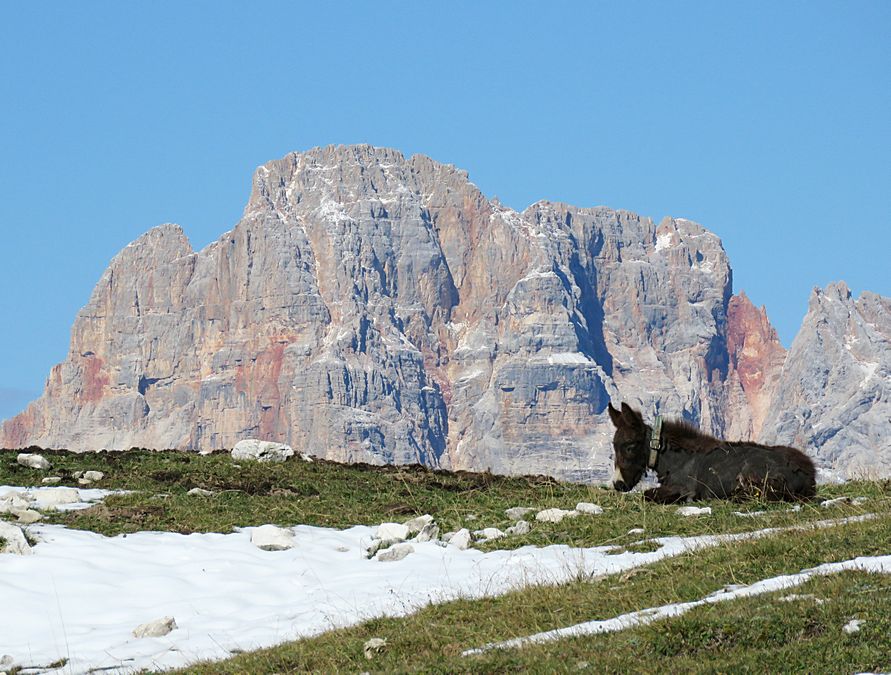





Guides Tomi and Rita

Snow-covered Austrian Alps in the distance.
Note deep ravine below.


Tre Cime di Lavaredo (Italian for the three peaks of Lavaredo),
also called the Drei Zinnen (German), are three distinctive
battlement-like peaks, in the Dolomites of northeastern Italy. They
are probably one of the best-known mountain groups in the Alps.


Rifugio in the distance is where we were
headed for lunch.

Another rifugio that we passed along the way.
There are numerous rifugios in the Dolomites.

Hikers who were going counterclockwise
around the loop trail. We went clockwise.


Water, snack, and/or bio break


We descended to a large meadow,
then headed back up toward our lunch destination.

Steeper section shortly before arrival at the rifugio.

Looking at the north faces of the 3 peaks of Lavaredo

Rifugio or Hutte where we had lunch.
So why does this hut have a German and Italian name?
The northern part of the Dolomites (Sudtirol in German or
Alto Adige in Italian) were part of the Austro-Hungarian empire
until the early 20th century. WWI produced fierce battles here, including
the creation of via ferrata or iron paths, many of which can still be climbed
today. After the war, the region became part of Italy, but the majority of
Sudtirol/Alto Adige is primarily German-speaking. Italian is, of course, the
national language of Italy. Some areas of the Dolomites, such as Cortina d'
Ampezzo, are largely Italian in culture and language.
Ladin, an ancient Romance
language, was spoken by the first inhabitants of the valleys of the Dolomites and
was later influenced by Latin speaking Romans. About 30,000 people in the Dolomites
speak Ladin today, so you can encounter any of these languages in the Dolomites.

Towering cliff above the hut
Note tunnels at the base of the cliff,
built during World War I.

Another view of the Tre Cime from the rifugio after the sun
has risen higher


View from the hut in the opposite direction from the Drei Zinnen or Tre Cime di Lavaredo
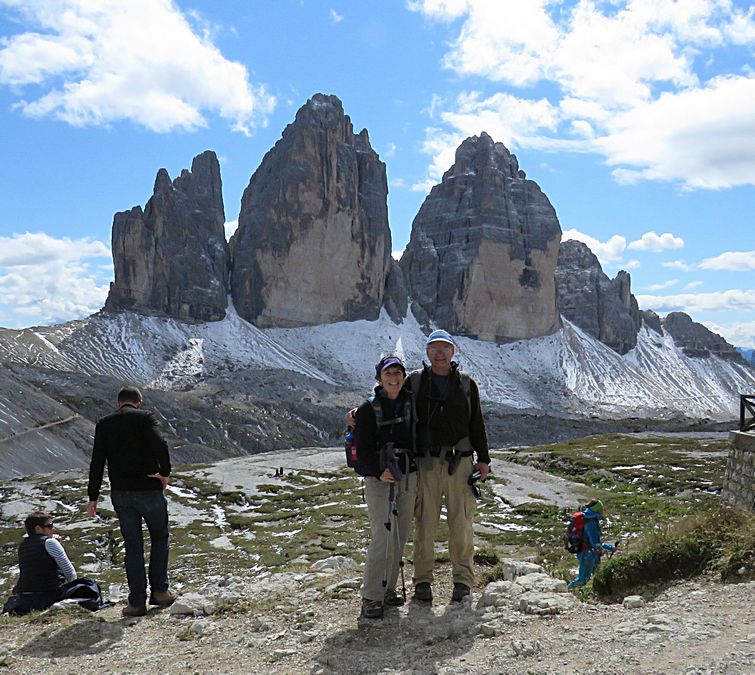
Pat and Jeff near the hut with the
Drei Zinnen in the background.
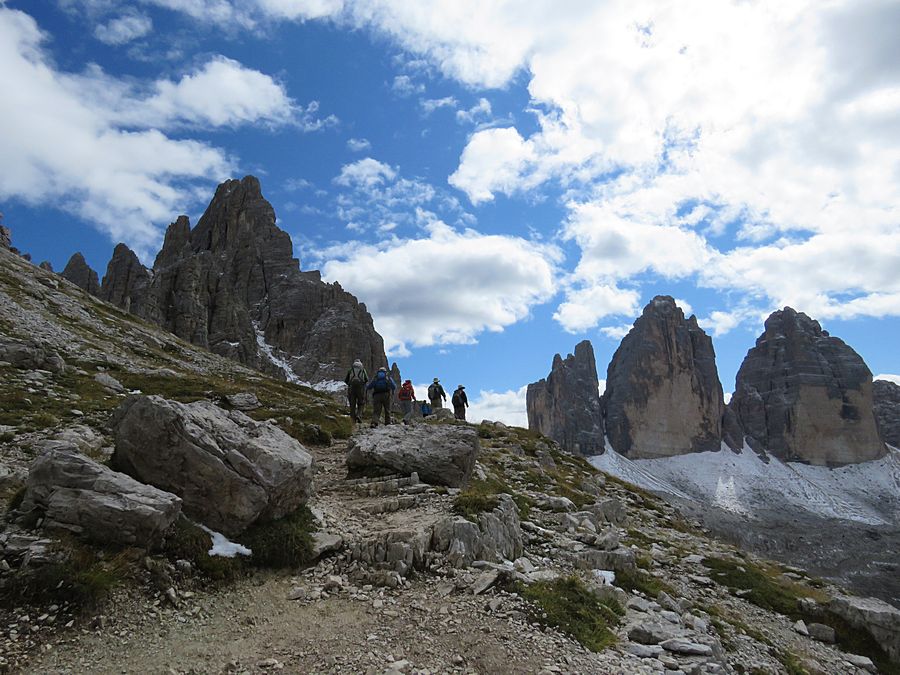
Heading out after lunch

One of many tunnels that still exist in the Dolomites
that were built during WWI for troops. Due to the border location,
during WWI and the fight between the Austro-Hungarian empire
and Italy, the Dolomites area was a war zone with hard fought
battles contesting borders that ran along mountain crests. Military
mule tracks were constructed to supplement existing shepherd's paths
for supplies and access, and they now comprise an important part of the
trails today. Remains of fortifications, trenches, barbed wire, etc., are
often seen along the trails. More soldiers perished under avalanches
and due to frigid weather than actual combat.

A view from inside the tunnel

We split into two groups, with most of the group
taking the lower route back toward the trailhead.
The upper route was more exposed and steeper.

Looking up at the towering spires above us from the upper trail.
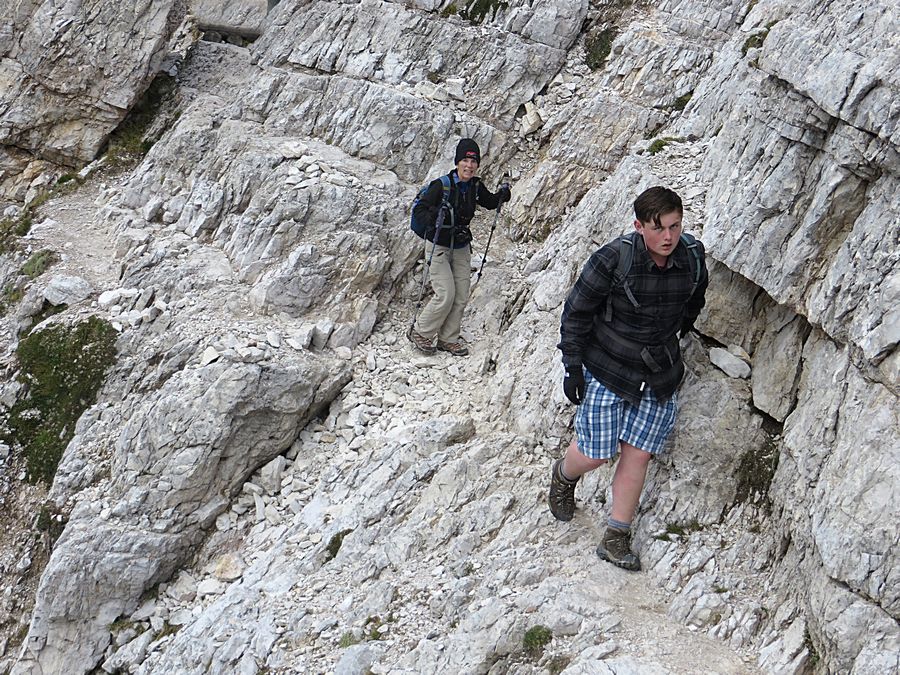
Pat and Cedric on the upper trail



Rita led the portion of our group that
took the upper route. The two sections met up here.
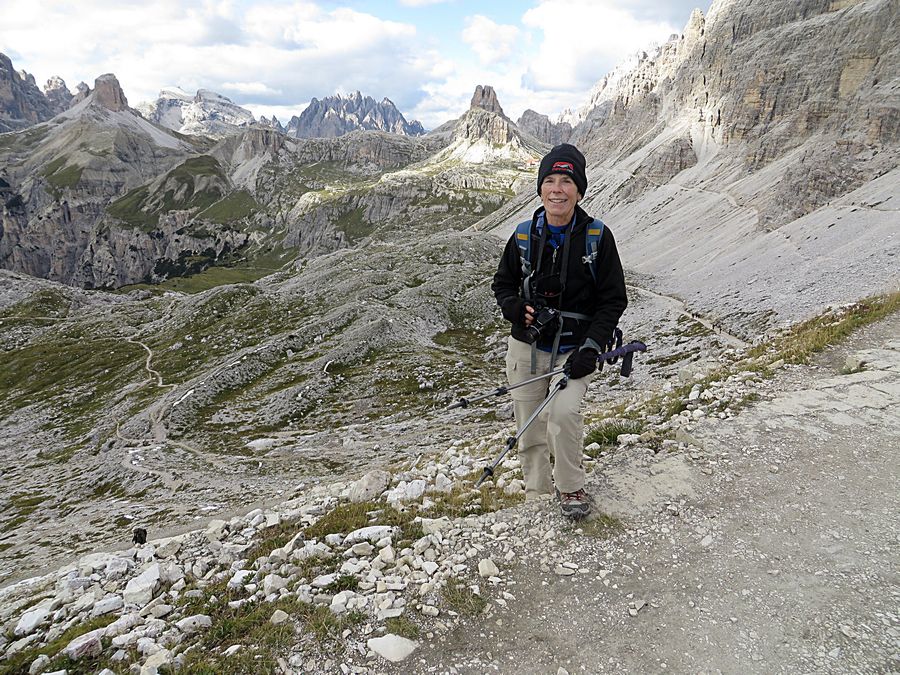
Looking back in the direction we had come on
the upper route.

Gorgeous view in front of us as we
starting heading back toward the trailhead parking.
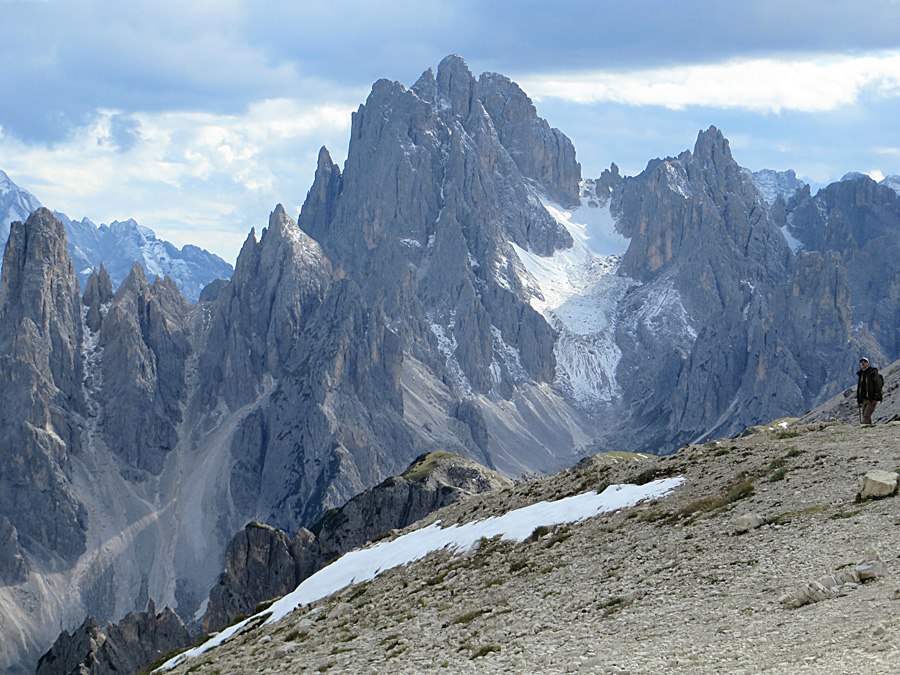

Almost back to the rifugio where we started the hike.
Link to Page Five - Dolomites - Hike 3
Pat's Home Page